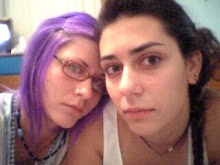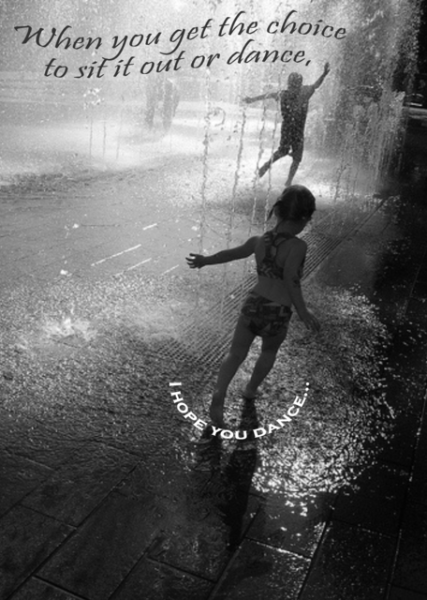

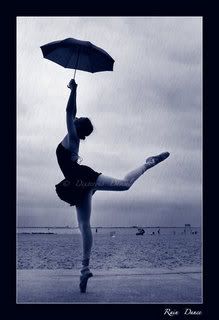


Tango (dance)
From Wikipedia, the free encyclopedia
Jump to: navigation, search
This article or section is missing citations or needs footnotes.
Using inline citations helps guard against copyright violations and factual inaccuracies. (November 2007)
Tango
Stylistic origins Habanera, Milonga, Polca
Cultural origins 1850s-1880s urban Argentina and Uruguay
Typical instruments Bandoneón, piano, guitar, violin, double bass, human voice and more
Mainstream popularity Rioplatense working class urban areas until the 1910s; upper and middle class cosmopolitan urban areas thereafter
Derivative forms Canyenge, Maxixe, Tango Waltz
Subgenres
Finnish tango, Ballroom Tango, Tango Fantasia, Tango Nuevo, Tango Argentino, Tango Oriental, Tango Liso, Tango Salon, Tango Orillero, Tango Milonguero
Fusion genres
Alternative tango, Tango Electronico
Other topics
Tango music
A couple dances Argentine Tango.
Photo by Raphael Koerich.Tango is a musical genre and its associated dance forms that originated in Buenos Aires, Argentina and Montevideo, Uruguay and spread to the rest of the world soon after that.
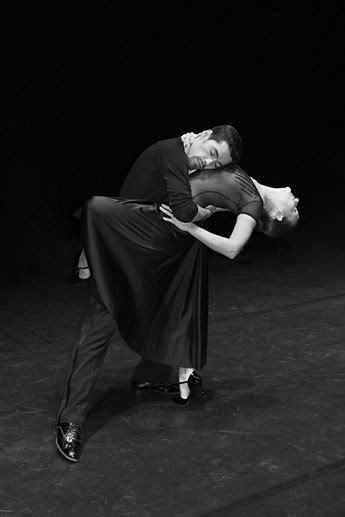
Early tango was known as tango criollo, or simply tango. Today, there are many tango dance styles, including Argentine Tango, Uruguayan Tango, Ballroom tango (American and International styles), Finnish tango and vintage tangos. What many consider to be the authentic tango is that closest to that originally danced in Argentina and Uruguay, though other types of tango have developed into mature dances in their own right.
Contents [hide]
1 History
2 Tango styles
2.1 Ballroom tango
2.2 Finnish tango
2.3 Tango Nuevo
2.4 Technique comparison
3 Tango influence
4 Tango in film
5 See also
6 References
7 External links
[edit] History
Main article: History of Tango
The dance originated in lower-class districts of Buenos Aires. The music derived from the fusion of various forms of music from Europe.[1] Jorge Luis Borges in "El idioma de los argentinos" writes:"Tango belongs to the Rio de la Plata and it is the son of Uruguayan "milonga" and grandson of the "habanera". The word Tango seems to have first been used in connection with the dance in the 1890s. Initially it was just one of the many dances, but it soon became popular throughout society, as theatres and street barrel organs spread it from the suburbs to the working-class slums, which were packed with hundreds of thousands of European immigrants.
In the early years of the twentieth century, dancers and orchestras from Buenos Aires and Montevideo travelled to Europe, and the first European tango craze took place in Paris, soon followed by London, Berlin, and other capitals. Towards the end of 1913 it hit New York in the USA, and Finland. In the USA around 1911 the name "Tango" was often applied to dances in a 2/4 or 4/4 rhythm such as the one-step. The term was fashionable and did not indicate that tango steps would be used in the dance, although they might be. Tango music was sometimes played, but at a rather fast tempo. Instructors of the period would sometimes refer to this as a "North American Tango", versus the "Rio de la Plata Tango". By 1914 more authentic tango stylings were soon developed, along with some variations like Albert Newman's "Minuet" Tango.
In Argentina, the onset in 1929 of the Great Depression, and restrictions introduced after the overthrow of the Hipólito Yrigoyen government in 1930 caused Tango to decline. Its fortunes were reversed as tango again became widely fashionable and a matter of national pride under the government of Juan Perón. Tango declined again in the 1950s with economic depression and as the military dictatorships banned public gatherings, followed by the popularity of Rock and Roll. The dance lived on in smaller venues until its revival in 1983 following the opening in Paris of the show Tango Argentino created by Claudio Segovia & Hector Orezzoli. This show made a revolution worldwide, and people everywhere started taking tango lessons.
In 1990, dancers Miguel Angel Zotto and Milena Plebs founded the "Tango X 2" Company , generating novel spectacles and that a great current of young people incline for the dance of the tango, an unusual thing at the time. They created a style that recovered the traditional tango of the milongas, renewed it and placed it as central element in its creations, doing an archeological search of the diverse styles of the tango.
Many shows toured around the world, such as Broadway Musicals Tango Argentino & Forever Tango, Tango X 2, and Tango Pasion among others.
[edit] Tango styles
Tango postcard, c. 1919
Tango Show in Buenos AiresTango consists of a variety of styles that developed in different regions and eras of Argentina and Uruguay as well as in other locations around the world. The dance developed in response to many cultural elements, such as the crowding of the venue and even the fashions in clothing. The styles are mostly danced in either open embrace, where lead and follow connect at arms length, or close embrace, where the lead and follow connect chest-to-chest...
Different styles of Tango are:
Tango Argentino
Tango Oriental (uruguayo)
Tango Canyengue
Tango Liso
Tango Salon
Tango Orillero
Tango Milonguero (Tango Apilado)
Tango Nuevo
Show Tango (also known as Fantasia)
Ballroom Tango
Finnish Tango
These are danced to several types of music:
Tango
Vals (the tango version of waltz)
Milonga (a related dance that usually has a faster tempo)
Tango Electronico
"Alternative Tango," i.e. non-tango music appropriated for use in the dance
The "milonguero" style is characterized by a very close embrace, small steps, and syncopated rhythmic footwork. It is based on the petitero or caquero style of the crowded downtown clubs of the '50s.
In contrast, the tango that originated in the family clubs of the suburban neighborhoods (Villa Urquiza/Devoto/Avellaneda etc.) emphasizes long elegant steps, and complex figures. In this case the embrace may be allowed to open briefly, to permit execution of the complicated footwork.
The complex figures of this style became the basis for a theatrical performance style of Tango seen in the touring stage shows. For stage purposes, the embrace is often very open, and the complex footwork is augmented with gymnastic lifts, kicks, and drops.
A newer style sometimes called "Tango Nuevo" has been popularized in recent years by a younger generation of dancers. The embrace is often quite open and very elastic, permitting the leader to lead a large variety of very complex figures. This style is often associated with those who enjoy dancing to jazz- and techno-tinged "alternative Tango" music, in addition to traditional Tango compositions.

[edit] Ballroom tango
Main article: Tango (ballroom)
Ballroom tango illustration, 1914.Ballroom tango, divided in recent decades into the "International" (English) and "European" styles, has descended from the tango styles that developed when the tango first went abroad to Europe and North America. The dance was simplified, adapted to the preferences of conventional ballroom dancers, and incorporated into the repertoire used in International Ballroom dance competitions. English Tango was first codified in October 1922, when it was proposed that it should only be danced to modern tunes, ideally at 30 bars per minute (i.e. 120 beats per minute - assuming a 4/4 measure).
Subsequently the English Tango evolved mainly as a highly competitive dance, while the American Tango evolved as an unjudged social dance with an emphasis on leading and following skills. This has led to some principal distinctions in basic technique and style. Nevertheless there are quite a few competitions held in the American style, and of course mutual borrowing of technique and dance patterns happens all the time.
Ballroom tangos use different music and styling from Argentine tangos, with more staccato movements and the characteristic "head snaps". The head snaps are totally foreign to Argentine and Uruguayan tango, and were introduced in 1934 under the influence of a similar movement in the legs and feet of the Argentine tango, and the theatrical movements of the pasodoble. This style became very popular in Germany and was soon introduced to England, one of the first proponents being Mr Camp. The movements were very popular with spectators, but not with competition judges (Source: PJS Richardson, History of English Ballroom Dancing, Herbert Jenkins 1946, page 101-102)
[edit] Finnish tango
Main article: Finnish tango
The tango spread from the dominant urban dance form to become hugely popular across Finland in the 50s after the wars. The melancholy tone of the music reflects the themes of Finnish folk poetry; Finnish tango is almost always in a minor key.
The tango is danced in very close full upper body contact in a wide and strong frame, and features smooth horizontal movements that are very strong and determined. Dancers are very low, allowing long steps without any up and down movement. Forward steps land heel first, and in backward steps dancers push from the heel. In basic steps, the passing leg moves quickly to rest for a moment close to the grounded leg.
Each year the Tangomarkkinat, or tango festival, draws over 100,000 tangophiles to the central Finnish town of Seinäjoki, which also hosts the Tango Museum.
[edit] Tango Nuevo
In the late 1990s a new style of tango dancing began appearing worldwide. Tango Nuevo dance style features an open embrace, fluid partner movements, trading of lead and further regional reinventions of the tango dance. Tango Nuevo is largely fueled by a fusion between tango music and electronica, though the style can be adapted to traditional tango and even non-tango songs. Gotan Project released their first tango fusion album in 2000, quickly following with La Revancha del Tango, released in 2001. Bajofondo Tango Club, a Rioplatense music band consisting of seven musicians from Argentina and Uruguay, released their first album in 2002. Tanghetto's album Emigrante (electrotango) appeared in 2003 and was nominated for a Latin Grammy in 2004. These and other electronic tango fusion songs bring an element of revitalization to the tango dance, serving to attract a younger group of dancers.
[edit] Technique comparison
A choreographed and stylized ganchoArgentine, Uruguayan and Ballroom Tango use very different techniques and vocabularies, to the point where some consider them related in name only. In Argentine tango, the body's center moves first, then the feet reach to support it. In ballroom tango, the body is initially set in motion across the floor through the flexing of the lower joints (hip, knee, ankle) while the feet are delayed, then the feet move quickly to catch the body, resulting in snatching or striking action that reflects the staccato nature of this style's preferred music.
In Argentine tango, the steps are typically more gliding, but can vary widely in timing, speed, and character, and follow no single specific rhythm. Because the dance is led and followed at the level of individual steps, these variations can occur from one step to the next. This allows the dancers to vary the dance from moment to moment to match the music (which often has both legato and/or staccato elements) and their mood.
The Argentine Tango's frame, called an abrazo or "embrace," is not rigid, but flexibly adjusts to different steps, and may vary from being quite close, to offset in a "V" frame, to open. The Ballroom Tango's frame is flexible too, but it is always danced in closed position: higher in the elbows, tone in the arms and constant conection through the body.
There is a closed position as in other types of ballroom dance, but it differs significantly between types of tango. In Argentine Tango, the "close embrace" involves continuous contact at the full upper body, but not the legs. In Ballroom tango, the "close embrace" involves close contact from the top of the ribs down to the pelvis or upper thighs. In Argentine Tango, the ball or toe of the foot may be placed first. Alternately, the dancer may take the floor with the entire foot in a cat-like manner. In the International style of Tango, "heel leads" (stepping first onto the heel, then the whole foot) are used for forward steps.
Ballroom tango steps stay close to the floor, while the Argentine Tango includes moves such as the boleo (allowing momentum to carry one's leg into the air) and gancho (hooking one's leg around one's partner's leg or body) in which the feet travel off the ground. Argentine Tango features other vocabulary foreign to ballroom, such as the parada (in which the leader puts his foot against the follower's foot), the arrastre (in which the leader appears to drag or be dragged by the follower's foot), and several kinds of sacada (in which the leader displaces the follower's leg by stepping into her space).
Finnish tango is closer to the Argentine than to Ballroom in its technique and vocabulary. Other regional variations are based on the Argentine style as well.
[edit] Tango influence
Music and dance elements of tango are popular in activities related to gymnastics, figure skating, synchronized swimming, etc., because of its dramatic feeling and its cultural associations with romance.
Mural of Carlos Gardel painted by Uruguayan Carlos Páez VilaróFor 1978 FIFA World Cup in Argentina, Adidas designed a ball and named it Tango[1] likely a tribute to the host country of the event. This design was also used in 1982 FIFA World Cup in Spain as Tango Málaga[2], and in 1984 and 1988 European Football Championships in France and West Germany.
[edit] Tango in film
Argentine tango is the main subject in these films:
Adiós Buenos Aires (1938)
The Tango Bar (1988), starring Raúl Juliá
The Tango Lesson (1997), starring Sally Potter and Pablo Verón, directed by Sally Potter
Tango (1998), starring Cecilia Narova and Mía Maestro, directed by Carlos Saura
Assassination Tango (2002), starring Robert Duvall, Rubén Blades and Kathy Baker, directed by Robert Duvall
Orquesta Tipica (2005), documentary film about typical orchestra Fernandez Fierro, directed by Nicolas Entel
12 Tangos - Adios Buenos Aires (2005), directed by Arne Birkenstock
A number of films show ballroom tango in several scenes, such as:
The Four Horsemen of the Apocalypse (1921), starring Rudolph Valentino and Alice Terry, directed by Rex Ingram.
Last Tango in Paris (1972), starring Marlon Brando and Maria Schneider, directed by Bernardo Bertolucci.
The World's Greatest Lover (1977), starring Gene Wilder (who also directed), Carol Kane and Dom DeLuise.
Death on the Nile (1978), Peter Ustinov and Olivia Hussey tango whilst David Niven is the unfortunate partner to Angela Lansbury's rather eccentric version of the dance.
Never Say Never Again (1983), starring Sean Connery and Kim Basinger, directed by Irvin Kershner.
Scent of a Woman (1992), Al Pacino as blind Colonel dances Argentine Tango.
Strictly Ballroom (1992), directed by Baz Luhrmann
Addams Family Values (1993), Raul Julia and Anjelica Huston dance a tango so passionate that it literally burns the floor and makes all the champagne bottles in the nightclub pop their corks.
Schindler's List (1993), starring Liam Neeson
True Lies (1994), starring Arnold Schwarzenegger and Jamie Lee Curtis, directed by James Cameron
Evita (1996), Madonna and Antonio Banderas dance a ballroom tango.
Happy Together (1997), directed by Wong Kar-wai
Moulin Rouge! (2001), featuring Ewan McGregor and "El Tango de Roxanne"
Le Tango Des Rashevski (2002)
Chicago (2002), starring Renée Zellweger, Catherine Zeta-Jones, and Richard Gere, directed by Rob Marshall includes a song titled "The Cell Block Tango" and is accompanied with a dance.
Frida (2002), Salma Hayek and Ashley Judd dance a tango to the Lila Downs performed song Alcoba Azul.
Shall We Dance (2004), starring Richard Gere, Jennifer Lopez and Susan Sarandon, directed by Peter Chelsom.
Madonna featured choreography inspired by the argentine tango styles for the Die Another Day section of her 2004 Re-Invention Tour. Segments of the 2005 documentary I'm Going To Tell You A Secret show this choreograpy in use.
Mr. & Mrs. Smith (2005), starring Brad Pitt and Angelina Jolie, directed by Doug Liman.
Rent (2005) had Anthony Rapp and Tracie Thoms perform a semi-elaborate ballroom tango in the song "Tango:Maureen" to describe their emotional relations and issues over a promiscuous girl they both dated.
Mad Hot Ballroom (2005), documentary directed by Marilyn Agrelo
Take the Lead (2006), starring Antonio Banderas, directed by Liz Friedlander
Finnish tango is featured to a greater or lesser extent in the following films:
Onnen maa (1993), starring Pertti Koivula and Katariina Kaitue, directed by Markku Pölönen.
Levottomat (2000), starring Mikko Nousiainen and Laura Malmivaara, directed by Aku Louhimies.
Tulitikkutehtaan tyttö (1990), starring Kati Outinen, directed by Aki Kaurismäki.
Mies vailla menneisyyttä (2002), starring Markku Peltola and Kati Outinen, directed by Aki Kaurismäki.
Varjoja paratiisissa (1986), starring Matti Pellonpää and Kati Outinen, directed by Aki Kaurismäki .
Kuutamolla (2002), starring Minna Haapkylä and Laura Malmivaara, directed by Aku Louhimies.
Tango Kabaree (2001), starring Martti Suosalo and Aira Samulin, directed by Pekka Lehto.
Minä soitan sinulle illalla (1954), starring Olavi Virta, directed by Armand Lohikoski.
[edit] See also
Casual, unchoreographed Argentine social style at an outdoor tango partyArgentine Tango
Tango (music)
Carlos Gardel
Ástor Piazzolla
Lunfardo
[edit] References
^ Christine Denniston. Couple Dancing and the Beginning of Tango (2003)
[edit] External links
"El Tango"- Photos, art, history and videos
Tango Videos - videos of Tango dance performances
Government of Argentina - Tango information page
Retrieved from "http://en.wikipedia.org/wiki/Tango_%28dance%29"
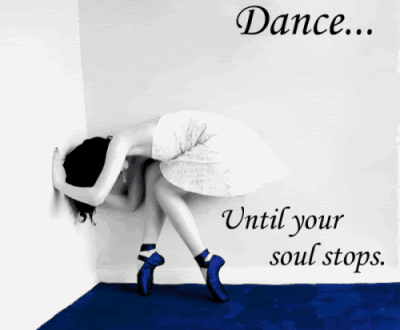
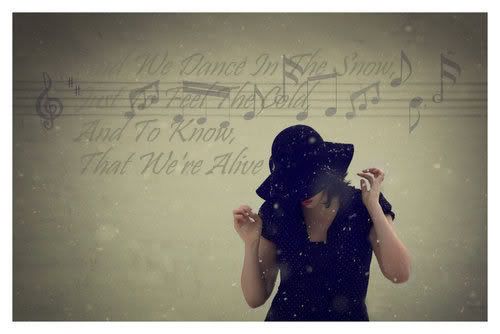
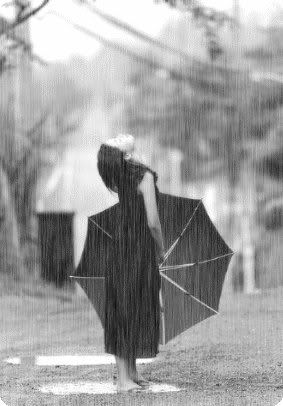
History
[edit] Late 1940s
In 1947, the term rhythm and blues was coined as a musical marketing term in the United States by Jerry Wexler of Billboard magazine.[4] It replaced the term race music, which originally came from within the black community, but was deemed offensive in the postwar world.[5] In that year, Louis Jordan dominated the top five listings of the R&B charts with three songs, and two of the top five songs were based on the boogie-woogie rhythms that had come to prominence during the 1940s.[6] Jordan's band, the Tympany Five (formed in 1938), consisted of him on saxophone and vocals, along with musicians on trumpet, tenor saxophone, piano, bass and drums.[7] Lawrence Cohn described the music as "grittier than his boogie-era jazz-tinged blues".[8] Robert Palmer described it as "urbane, rocking, jazz based music with a heavy, insistent beat".[9] Jordan's cool music, along with that of Big Joe Turner and Wynonie Harris, is now also referred to as jump blues.
In 1948, RCA Victor was marketing black music under the name Blues and Rhythm. That year found the Wynonie Harris song "Good Rockin' Tonight" in the #2 spot, following band leader Sonny Thompson's "Long Gone" at #1.[10][11]
In 1949, the term rhythm and blues replaced the Billboard category Harlem Hit Parade.[3] Also in that year, "The Huckle-Buck", recorded by band leader and saxophonist Paul Williams, was the #1 R&B tune, remaining on top of the charts for nearly the entire ykkear. Written by musician and arranger Andy Gibson, the song was described as a "dirty boogie" because it was risque and raunchy.[12] Paul Williams and His Hucklebuckers' concerts were sweaty riotous affairs that got shut down on more than one occasion. Their lyrics, by Roy Alfred (who later co-wrote the 1955 hit "(The) Rock and Roll Waltz"), were mildly sexually suggestive, and one teenager from Philadelphia said "That Hucklebuck was a very nasty dance."[13][14] Also in 1949, a new version of a 1920s blues song, "Ain't Nobody's Business" was a #4 hit for Jimmy Witherspoon, and Louis Jordan and the Tympany Five once again made the top 5 with "Saturday Night Fish Fry".[15]
[edit] Early to mid 1950s
Working with African American musicians, Greek American Johnny Otis, who had signed with the Newark, New Jersey-based Savoy Records, produced many R&B hits in 1951, including: "Double Crossing Blues", "Mistrustin' Blues" and "Cupid's Boogie", all of which hit number one that year. Otis scored ten top ten hits that year. Other hits include: "Gee Baby", "Mambo Boogie" and "All Nite Long".[16] The Clovers, a vocal trio who sang a distinctive sounding combination of blues and gospel, had the #5 hit of the year with "Don't You Know I Love You" on Atlantic Records.[17][18][19] Also in July 1951, Cleveland, Ohio DJ Alan Freed started a late-night radio show called "The Moondog Rock Roll House Party" on WJW-AM (850).[20] Freed's show was sponsored by Fred Mintz, whose R&B record store had a primarily African American clientele. Freed began referring to the rhythm and blues music he played as rock and roll.
Ruth Brown, on the Atlantic Records label, placed hits in the top 5 every year from 1951 through 1954: "Teardrops from My Eyes", "Five, Ten, Fifteen Hours", "(Mama) He Treats Your Daughter Mean" and "What a Dream". Faye Adams‘s "Shake a Hand" made it to #2 in 1952. In 1953, the R&B record-buying public made Willie Mae Thornton's original recording of Lieber and Stoller's Hound Dog the #3 hit that year.[21] That same year The Orioles, a doo-wop group, had the #4 hit of the year with Crying in the Chapel.[22]
In 1954 The Chords' "Sh-Boom" became the first hit to cross over from the R&B chart to hit the top 10 early in the year. Late in the year, and into 1955, "Hearts of Stone" by The Charms made the top 20.[23]
[edit] Mid to late 1950s
Fats Domino made the top 30 of the pop charts in 1952 and 1953, then the top 10 with "Ain't That a Shame".[24] Ray Charles came to national prominence in 1955 with "I Got a Woman". It was an upfront use of gospel music conventions in an R&B context. Big Bill Broonzy said of Charles' music: "He's mixing the blues with the spirituals... I know that's wrong."[25] At the urging of Leonard Chess at Chess Records, Chuck Berry had reworked a fiddle tune with a long history, "Ida Red". The resulting "Maybellene" was not only a #3 hit on the R&B charts that year, but it also reached into the top 30 on the pop charts. Alan Freed, who had moved to the much larger market of New York City, helped the record become popular with white teenagers. Freed had been given part of the writers' credit by Chess in return for his promotional activities; a common practice at the time.[26] Also at Chess Records in 1955, Bo Diddley's debut record "Bo Diddley"/"I'm A Man" climbed to #2 on the R&B charts and popularized the Bo Diddley beat.
In 1956 an R&B "Top Stars of '56" tour took place. With headliners Al Hibbler, Frankie Lymon and the Teenagers, and Carl Perkins, whose "Blue Suede Shoes" was very popular with R&B music buyers. Some of the performers completing the bill were Chuck Berry, Cathy Carr, Shirley & Lee, Della Reese, the Cleftones, and the Spaniels with Illinois Jacquet's "Big Rockin' Rhythm Nand. Cities visited by the tour included Columbia, SC, Annapolis, MD, Pittsburgh, PA, Syracuse, Rochester and Buffalo, NY, into Canada, and through the mid Western US ending in Texas. In Columbia the concert ended with a near riot as Perkins began his first song as the closing act. Perkins is quoted as saying, "It was dangerous. Lot of kids got hurt. There was a lot of rioting going on, just crazy, man! The music drove 'em insane." In Annapolis 70,000 to 50,000 people tried to attend a sold out performance with 8,000 seats. Roads were clogged for seven hours.[27]
Two Elvis Presley records made the R&B top five in 1957: "Jailhouse Rock"/"Treat Me Nice" at #1, and "All Shook Up" at #5, an unprecedented acceptance of a non-African American artist into a music category known for being created by blacks.[28] Nat King Cole, a former jazz pianist who had had #1 and #2 hits on the pop charts in the early 1950s ("Mona Lisa" at #2 in 1950 and "Too Young" at #1 in 1951), had a record in the top 5 in the R&B charts in 1958, "Looking Back"/"Do I Like It".
In 1959, two black-owned record labels, one of which would become hugely successful, made their debut: Sam Cooke's Sar, and Berry Gordy's Motown Records.[29] Brook Benton was at the top of the R&B charts in 1959 and 1960 with one #1 and two #2 hits. Benton had a certain warmth in his voice that attracted a wide variety of listeners, and his ballads led to comparisons with performers such as Cole, Sinatra and Tony Bennett.[30]
[edit] 1960s and later
Sam Cooke‘s #5 hit "Chain Gang" is indicative of R&B in 1960, as is Chubby Checker's #5 hit "The Twist". [31][32] By the early 1960s, the music industry category previously known as rhythm and blues was being called soul music, and similar music by white artists was labeled blue eyed soul.[33] In 1961, Stax Records introduced Memphis soul with the Mar-Keys' "Last Night", an instrumental featuring horns, electric organ, and drums.[34] The record label also released Carla Thomas's "Gee Whiz", which featured violins, piano, drums and backup singers.[35] That same year, Motown had its first million-seller with Smokey Robinson and the Miracles' "Shop Around".[36]
By the 1970s, the term rhythm and blues was being used as a blanket term to describe soul and funk. In the 2000s, the initialism R&B is almost always used instead of the full rhythm and blues, and mainstream use of the term usually refers to contemporary R&B, which is a modern version of soul and funk-influenced pop music that originated as disco faded from popularity.


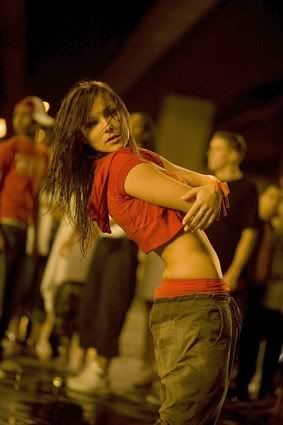
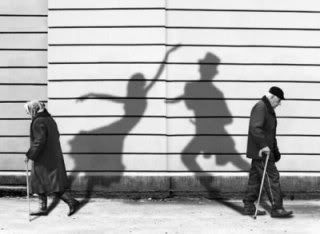
Latin dance
From Wikipedia, the free encyclopedia
Jump to: navigation, search
The term Latin dance has two meanings, depending on whether the context is social or ballroom dance.
Contents [hide]
1 Dances from Latin America
2 Ballroom dancing
3 See also
4 External links
[edit] Dances from Latin America
First, dances originating in Latin America. Typically these are Cha cha cha, Rumba, Samba, Salsa, Mambo, Merengue, Bachata, Cumbia, Bolero. Some dance instructors also include Tango and Argentine Tango in this list, although these differ from the rest in their style. In Argentina Tango is not considered folk dance as is the case with dances like Chacarera, Gato, Escondido and Zamba. Typical Bolivian folk dances are Morenada, Kullawada, Llamerada, Caporales and the recently created Tinku. In Colombia one of the typical dances is the Cumbia, not to be mistaken with Argentine Cumbia, a popular music genre influenced by Caribbean reggae and ska.
[edit] Ballroom dancing
The second is a more formal usage, to describe a category of International style ballroom dances, also called Latin American dances or International Latin. It consists of the following five dances: Cha cha, Rumba, Samba, Paso Doble, Jive. Notice that the last two dances are not in fact of Latin American origin. Compared to typical ballroom dance, Latin dances are generally faster-paced, more sensual, and have more rhythmic expression. Time is 4/4 straight rhythm or related. Couples in the basic position stand face-to-face. Music may be Latin American or contemporary popular music.
In DanceSport competitions, with their formal classification of dance programs, the International Latin class is subdivided into Professional Latin and Amateur Latin categories, as may be seen in competition listings. This is because formal dance competitions are carried out separately for professionals and for amateurs. In United States, the Pro-Am category is also used, when competing couples consist of one professional and one amateur.
[edit] See also
Dancesport World Champions (Professional Latin)
Dance and music of Latin America
List of dances
Glossary of partner dance terms
Latin American culture
Lucy Ballroom
[edit] External links
Bolivian indigenous and folk dances
Latin Dancing Guide
Retrieved from "http://en.wikipedia.org/wiki/Latin_dance"
![=]]](http://i119.photobucket.com/albums/o129/babyfl8mes/DANCE-2.jpg)






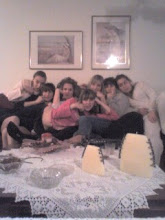
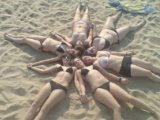_(1).jpg)

